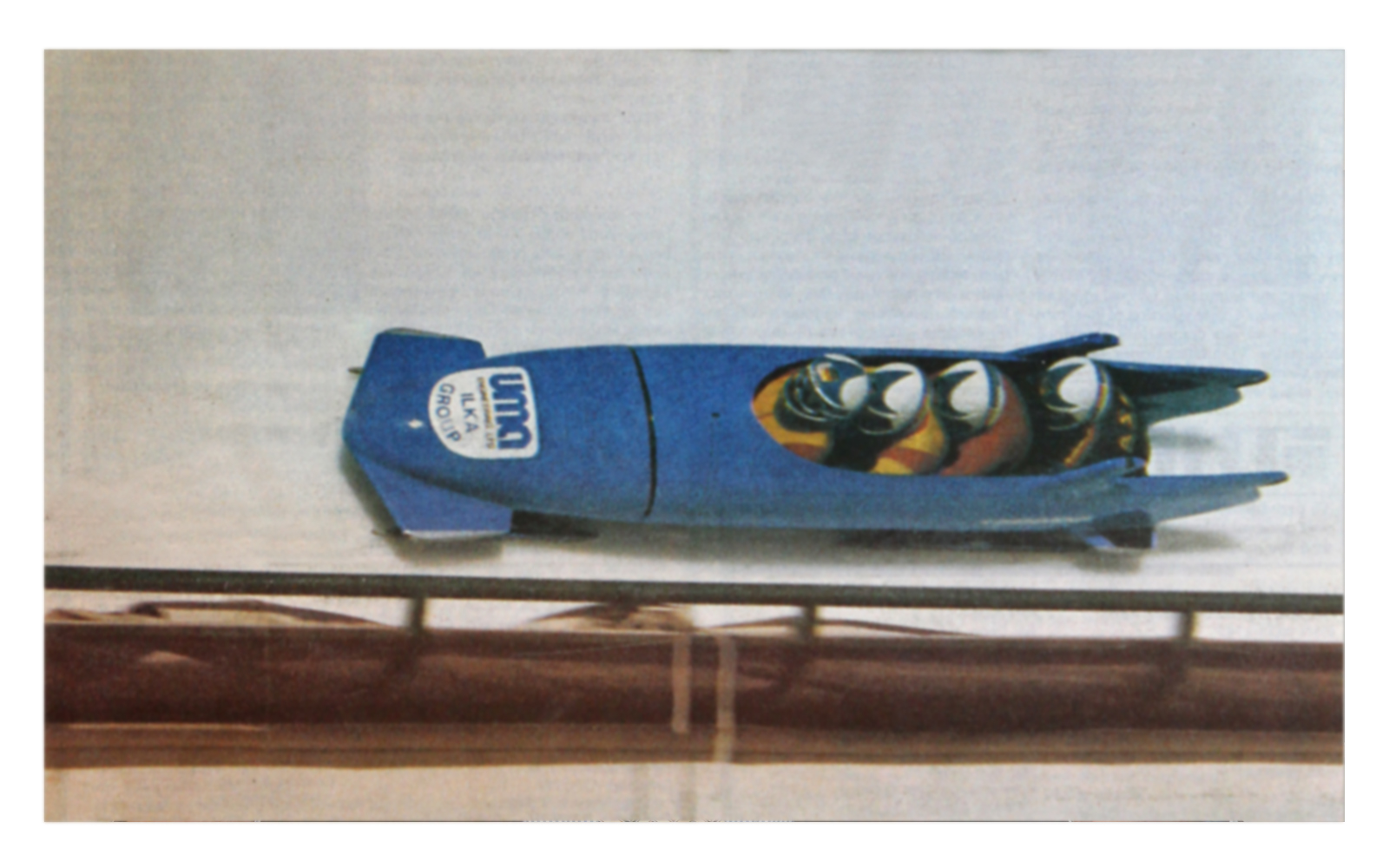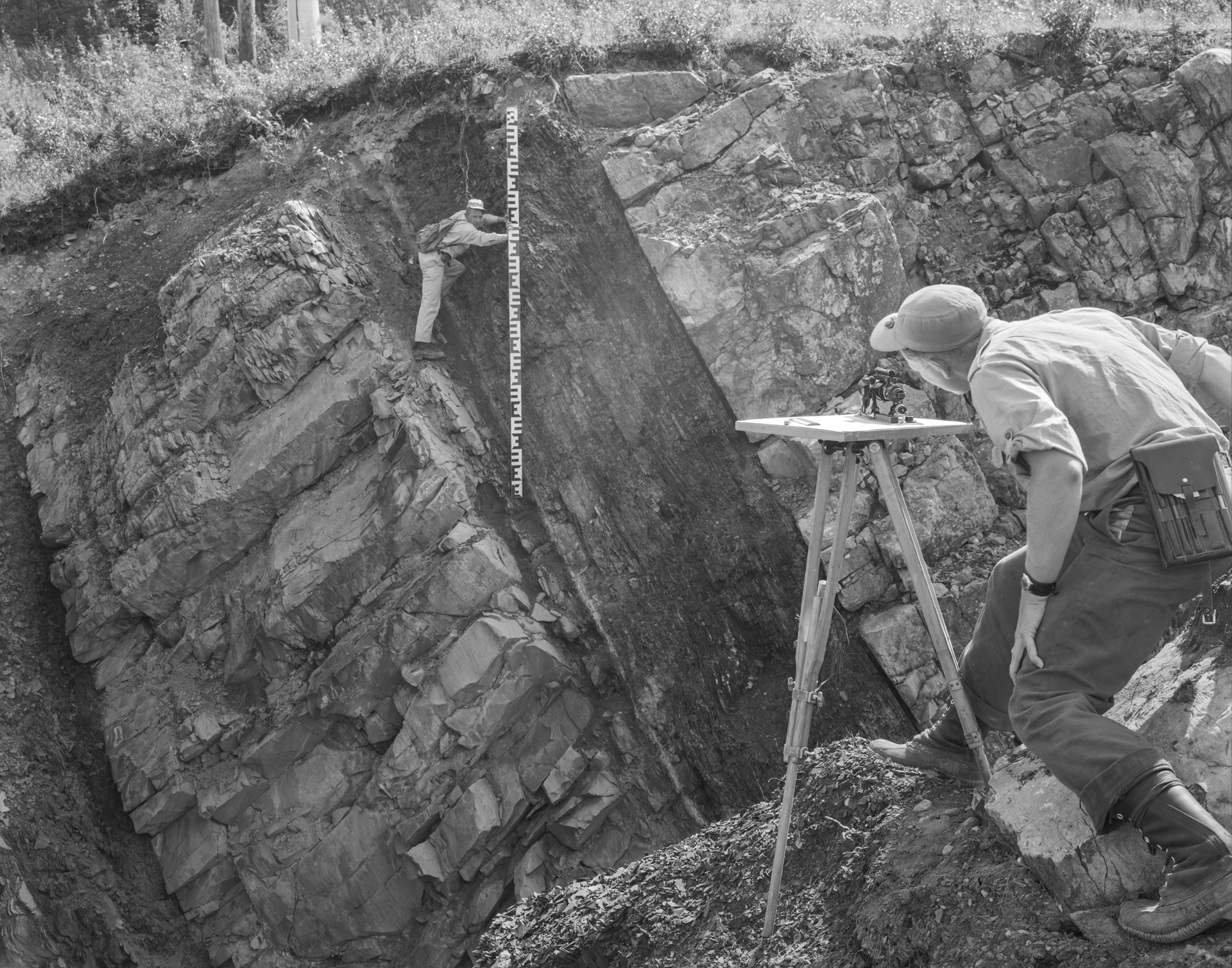South Peace Archives 1969.59.328
Grande Prairie’s Heart: 100 Years of 100th Avenue
Over the past 100 years, engineering has transformed how Albertans live, work, and play. In Grande Prairie, old photographs capture glimpses of that evolution along the city’s historic Richmond Avenue.
This road—also called 100th Avenue—is where Grande Prairie began.
When settlers flocked to the area in the early 1900s, grocery and hardware stores, hotels, theatres, horse stables, and garages quickly popped up along the busy street. Residents gathered there for winter carnivals and civic parades. They went there to buy groceries, have lunch, do their banking, shoot pool, enjoy a treat at the ice cream parlour, visit their barber, and go to church.
“Richmond Avenue really is the heart of Grande Prairie. It’s the main east-west connector for the entire city,” says Kristine Donnelly, P.Eng., the city’s engineering service manager.
Much of what you can see in the historic photos—and the things you can’t see, too—are thanks to engineering quietly going on in the background, she notes.
100th Avenue in 1925
Richmond Avenue circa 1925. Dirt roads, wooden sidewalks, telegraph poles, and behind-the-scenes engineering.
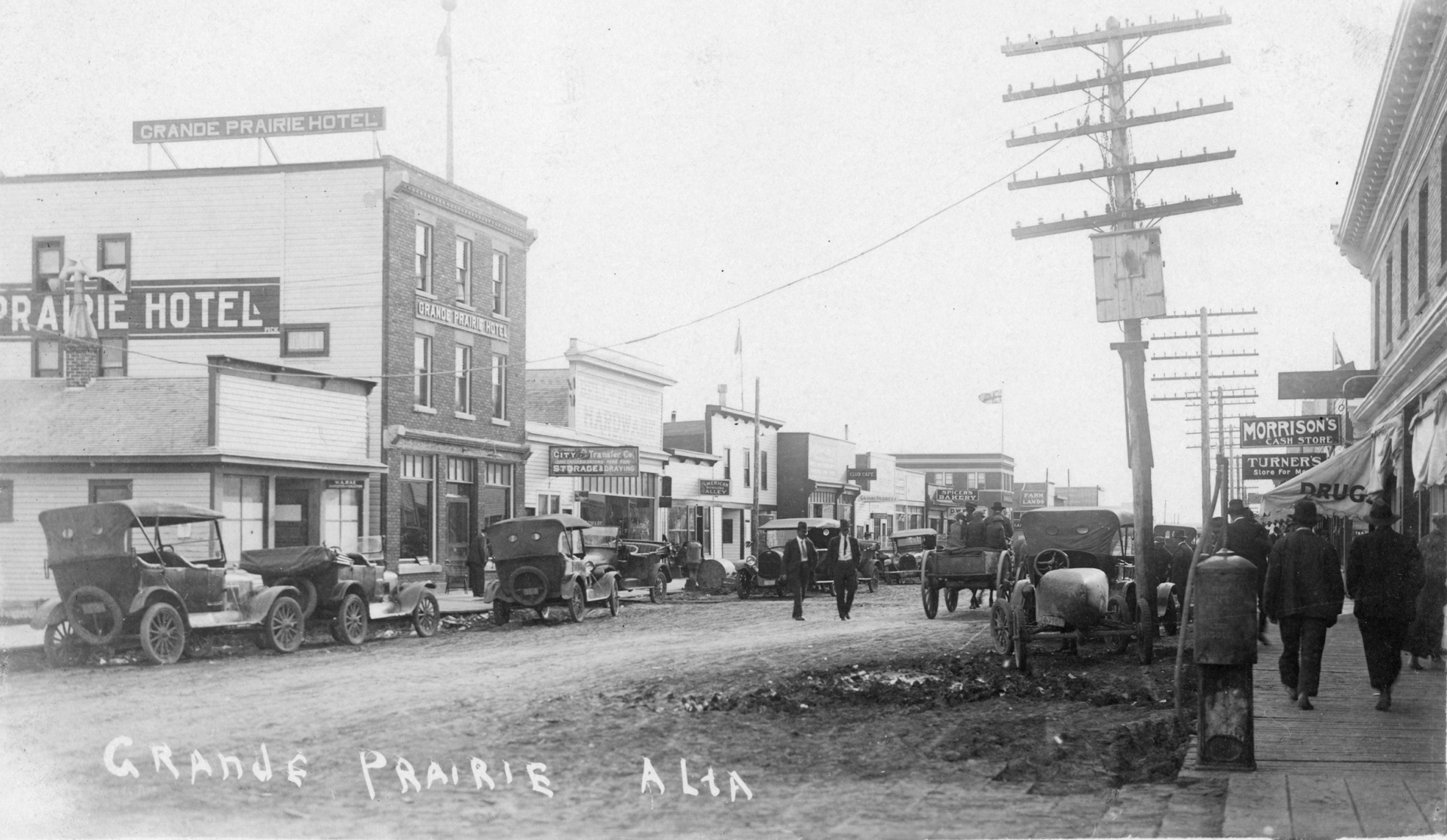
South Peace Archives 1969.59.328
Let’s begin circa 1925. A photo shows that Richmond Avenue was still a dirt road, although automobiles were beginning to outnumber horses and buggies. Lining the street are wood-plank sidewalks and giant telegraph poles—a key source of communication with the outside world.
By this time, Grande Prairie had been a town for six years, having surpassed 1,000 residents in 1919.
What can’t you see in the photo?
According to the book Memory Lane: A History of Downtown Grande Prairie from 1914-2014, the Grande Prairie Electric Co., formed in 1918, was providing Richmond Avenue and the rest of the town with a reliable source of power. Electricity from the plant was available from 5 a.m. to sunrise, and from sundown to midnight. It’s likely that the electrical poles were located behind the buildings, out of sight and in the back lane, as they still are today.
100th Avenue in 1935
A fire hydrant in front of the Imperial Bank in 1935 provides a hint about what’s now beneath Richmond Avenue—modern water and sanitary lines.
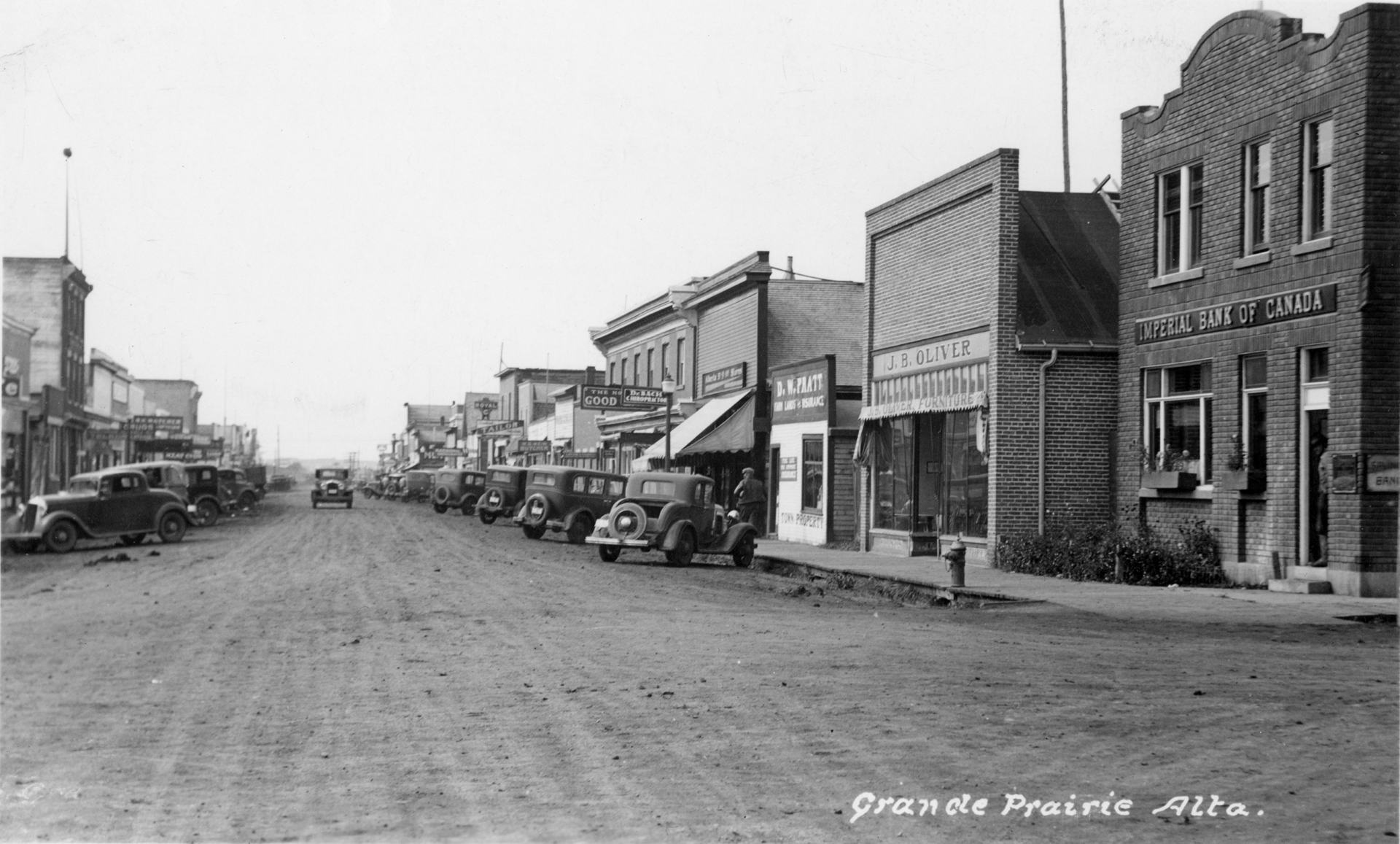
South Peace Archives 0002.05.01.011b
A photo taken a decade later doesn’t appear to show much progress. Or does it?
Yes, the road is still dirt and the sidewalks wooden. But what’s missing also tells a story. For one thing, there are no horses on the street—just cars. The telegraph poles are gone, too, likely replaced by modern telephone service. After all, Grande Prairie’s first phone had been installed in 1918.
What’s new in the photo? On the corner, in front of the Imperial Bank of Canada, a fire hydrant offers a major clue about what’s now beneath the ground. Around this time, says Donnelly, the first modern water and sanitary lines were installed under the road.
100th Avenue in 1950
In 1950, Richmond Avenue is paved, and concrete sidewalks and decorative streetlights now line the road.
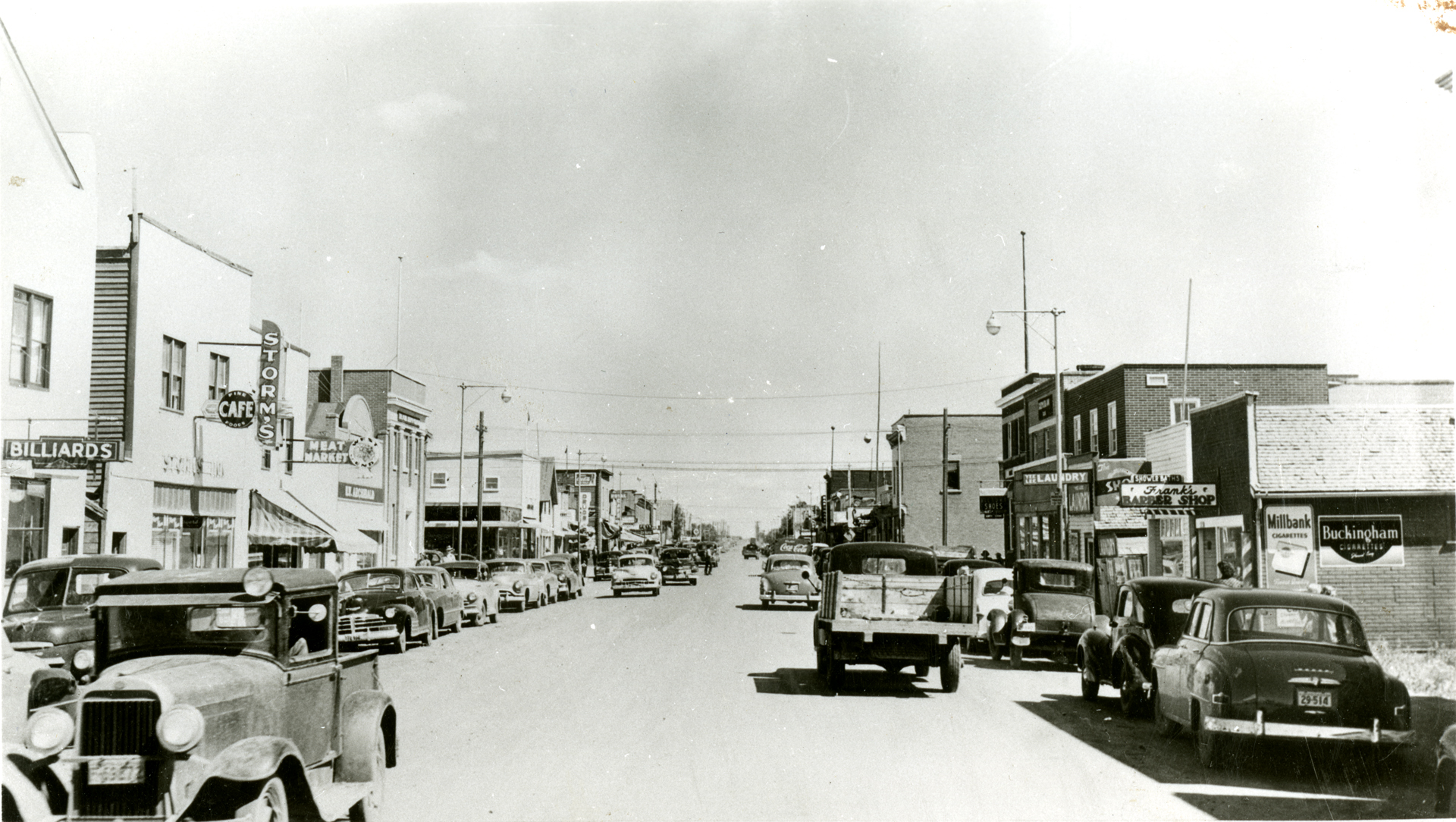
South Peace Archives 2005.71.3
In 1950, the transformation is more visibly evident. Our glimpse of Richmond Avenue is now paved, much of that having taken place in 1940s Grande Prairie. Concrete sidewalks and decorative streetlights line the road, which is bustling with cars and pickups.
The town experienced a post-war boom in the 1950s, with many of the early wooden buildings replaced with brick. In 1958, a crowd of 12,000 gathered at the courthouse to celebrate Grande Prairie becoming Alberta’s newest—and most northerly—city.
100th Avenue in 1965
In 1965, Richmond Avenue features new streetlights and festive lights strung across the road. Powerful mercury streetlights and a blaze of neon signs make Grande Prairie’s downtown one of the most brightly lit in Alberta.
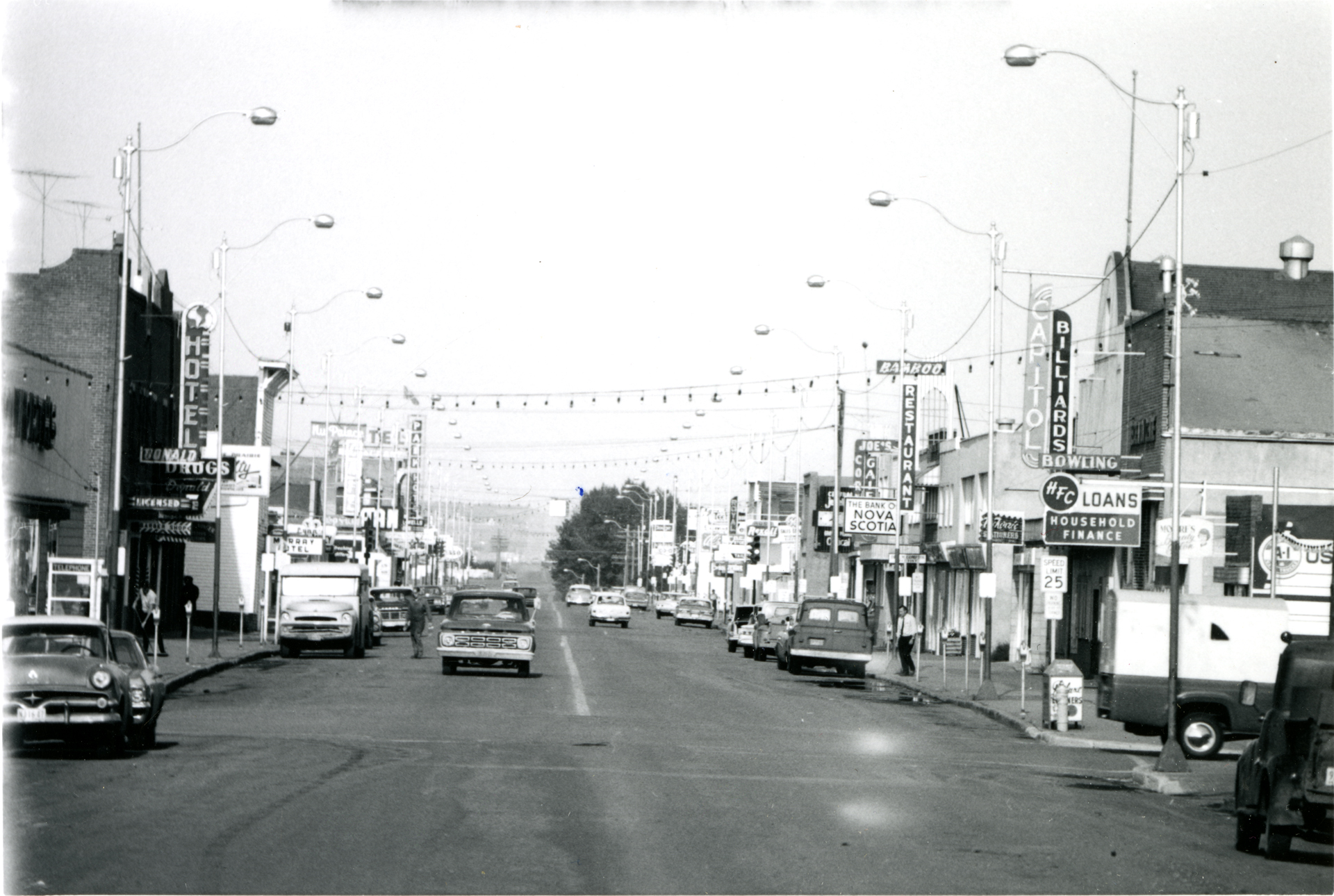
South Peace Archives 050.08.02.17
Fast-forward to 1965. New streetlights and festive lights strung across the road give Richmond Avenue a modern, welcoming vibe. In fact, in the 1960s, powerful mercury streetlights and a blaze of neon signs made Grande Prairie’s downtown one of the most brightly lit in Alberta.
The book Memory Lane puts it this way:
By the 1960s, Grande Prairie’s main streets, including 100th Avenue, had been paved, parking meters and fire hydrants installed, public telephone boxes and garbage cans placed, a speed limit posted, and many of the original buildings demolished to make way for larger, more modern structures. Many changes had occurred to the face of Grande Prairie’s business district in the first fifty years after it incorporated as a village, as many have taken place in the fifty years following.
100th Avenue in 2018
Richmond Avenue, at 100 Street facing west, shortly after a major modernization in 2018. Work included new sanitary and water lines, along with wider, more pedestrian-friendly sidewalks.
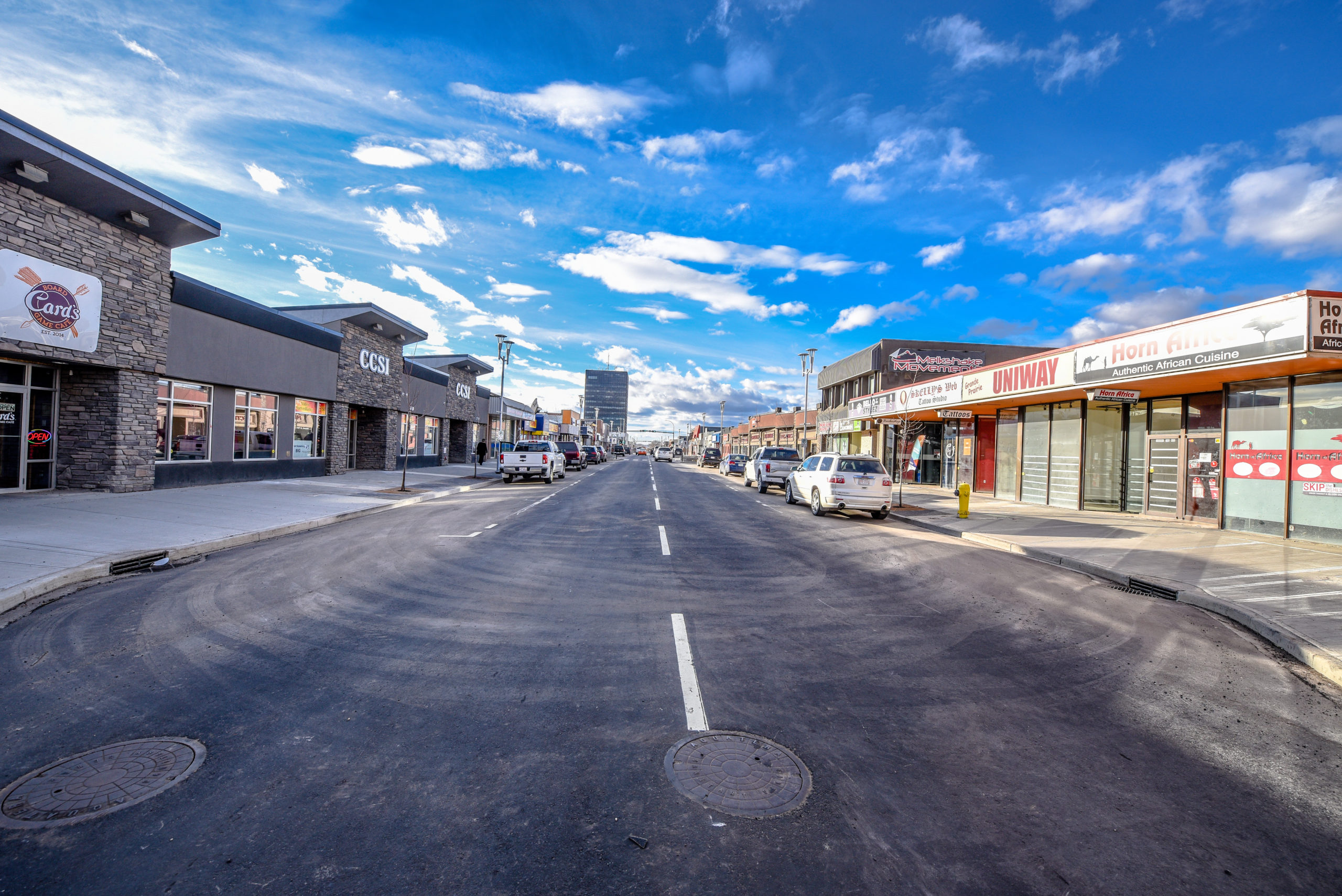
Photo courtesy of William Vavrek
More recently, in 2018, Grande Prairie undertook a major modernization and revitalization of Richmond Avenue, above and below the ground.
“We replaced those original water and sanitary lines dating from the late 1930s, and also increased their size to accommodate future growth,” says Donnelly. “The old lines lasted close to 80 years. Now that we have better materials, the new infrastructure should last even longer.”
Extra conduits were added beneath the surface to accommodate future technology needs—perhaps charging stations for flying cars or jet packs?
Sidewalks were widened to create a more pedestrian-friendly environment, while soil cells and irrigation were added underground to bring another kind of life to the avenue: trees!
“These days, engineering is not just about the asphalt, concrete, and pipes,” notes Donnelly. “Our vision was to create a vibrant downtown space that celebrates our heritage and will continue to bring people together for another 100 years.”
